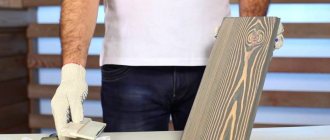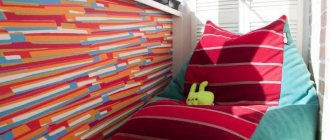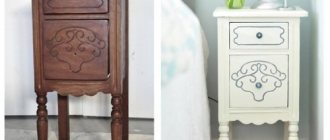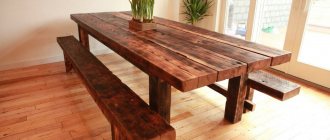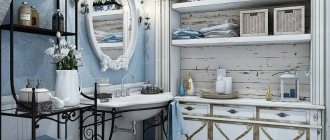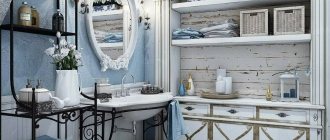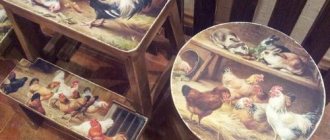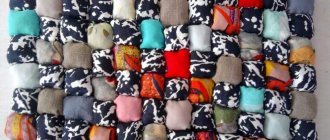Benefits of wicker furniture in the home
Weaving furniture from willow with your own hands has its advantages over the classic option of creating it from wood or chipboard. In addition to classic wicker, you can use other natural materials, such as rattan, reeds and even waste newspapers.
Furniture can be made from different natural materials.
- A chair or sofa made of wicker has a low cost compared to other materials.
- You will have a unique headset that no one else has.
- You will make furniture according to individual measurements depending on the size of the room. You no longer need to think about how to place an oversized set. You can weave it to the desired size and shape.
- The products are light, although they can withstand the weight of an adult. This is a comfortable solution for creating a children's set or furniture for the elderly.
- The process of making a product from wicker is not difficult if you understand the technology and watch several training videos.
- Natural weaving material is hypoallergenic and has no specific odors of paint or varnish. This is suitable for people prone to allergic reactions.
- The furniture is easy to clean. The only factors that a wicker product does not tolerate are regular exposure to ultraviolet rays and exposure to rain. But he also doesn’t like excessive dryness. Therefore, it is not recommended to leave it in bad weather or under the scorching sun for a long time. But once a month, cover the wicker product with a wet towel to prevent the material from drying out and cracking.
- This headset has a very long service life. If you treat it with care, it will last for decades.
Wicker furniture has many advantages.
Durability
Artificial raw materials are several times more durable than natural rattan. As a rule, the service life of technorattan interior items is at least twenty years, during which they do not lose their performance qualities. A set of poly-rattan furniture is not subject to fading under the influence of ultraviolet rays. Garden furniture is resistant to any external damage (scratches, cracks, etc.).
You can safely leave wicker chairs and a table on the open veranda, without any fear that the furniture set will be damaged by frost or heavy rain. Artificial rattan retains its attractive appearance for decades in any weather. The products are not afraid of sudden temperature changes. If natural rattan furniture should never be exposed to moisture, then artificial wicker can be doused with water from a garden hose.
Selection and preparation of raw materials
It is necessary to prepare raw materials until visible buds form on the branches. Using a sharp knife at a 40-degree angle, trim branches with a thin core. Bend each rod and test it for flexibility. If the branch does not break, but bends well, it is suitable for creating furniture from the vine with your own hands.
The material must be prepared before the buds appear.
If you plan to weave from willow branches, they can be harvested in the fall. Make sure that there are no buds on the rods yet or that they have already outlived their useful life. The surface of the raw material must be smooth, without knots. If you take natural material with buds, they can begin to germinate while already in the product.
Vine
Willow vine has good flexibility and wear resistance. This is a budget material that is suitable for beginners. The vine must be harvested on time, in early spring or autumn, so that its branches do not become coarse. Disadvantages include a tendency to dry out and crack. Therefore, it is not advisable to keep products made from wicker for a long time in the rain or scorching sun.
The vine is flexible and suitable for beginners.
Rattan
Comfortable weaving material, resistant to moisture. Rattan looks impressive both in interior items and in finished furniture. It is lightweight, flexible, and comfortable to use. This is an inexpensive option for beginners who decide to start making furniture from natural materials.
Rattan tolerates moisture well and is convenient for weaving.
Newspaper tubes
A budget option for city residents, when the “vine” can be made independently, literally from improvised means. You don’t need to go to the forest to harvest, because you can twist the tubes yourself. Of course, this will require a lot of newspapers, PVA glue, patience, perseverance and free time.
Furniture can even be woven from newspapers.
But you can make a luxurious furniture set from ordinary newspaper. Any paper product is suitable as a material: cardboard, newspapers, covered notebooks, notepads and magazines.
Reed
Reeds are often used to make DIY wicker furniture. This material is especially often used to create cozy armchairs. This is one of the most ancient weaving methods that has survived to this day. To work, take a part of the stem that is under water after the leaves turn yellow. This usually happens in early autumn. In addition to reeds, stems and leaves of cattail and reed are also used for weaving.
You can make beautiful and comfortable chairs from reed stems.
Bamboo
Bamboo is suitable for those who have already woven more than one chair or sofa. This is a tough vine that requires care and experience in handling. But if you managed to conquer bamboo fiber, you are a true weaving master!
Bamboo is the most difficult type of furniture to weave.
Rattan furniture
Rattan garden furniture is the choice of true aesthetes, as well as people who are not afraid of difficulties. Elegantly wicker, very beautiful and respectable furniture will help make the area a real relaxation area. In addition, it is very comfortable.
However, beauty requires sacrifice: rattan furniture is the most capricious and unpredictable lady. She will quickly become a victim of rain, sunlight, and temperature changes. Elegant braided fabric can become deformed from excessive use.
Such furniture will require constant shelter from rain, maintenance in a warm room, careful cleaning, and periodic renewal of the varnish on the surface of wicker products.
The cost of such products will also not be an advantage of this type of country furniture.
Weaving methods and patterns
The techniques for making wicker armchairs from wicker vary. You can combine several techniques to get an unusual result. Or stick to one weaving pattern to gain experience and get better at it.
There are various weaving patterns.
Solid
Continuous weaving is used to obtain a uniform, dense fabric. This is an option for creating kitchen utensils, seats and backs of furniture, bottoms or lids, such as table tops. There are several subtypes of continuous weaving:
- a rope of two rods;
- a rope of three rods;
- layer weaving.
Solid weaving is the densest and is used to create seats and backs of furniture.
The essence of the technique is that vine branches are alternately layered onto the frame rods. The result is a durable and elastic fabric that can be used as a basis for parts of future furniture.
Openwork
Openwork weaving combines elements of the previous “solid” technique. Alternating interweaves of material and voids form a beautiful lace of vines. Here you need to choose a high-quality vine so that it bends well and does not crack or break. This is the only way to create a beautiful, openwork pattern.
Openwork weaving creates lace patterns from the vine.
There are several types of openwork weaving:
- several subtypes of classic weaving;
- column openwork;
- diamond openwork, etc.
For edge processing
Finishing the edge is an important stage, where all the rods are hidden in a beautiful braid. There are several ways to do this:
- braiding;
- bending the racks inside the frame and masking them between the rods;
- weaving using the border edge technique.
Style
Wicker exterior items made using artificial rattan are presented in numerous types. All products differ in size, shape, color and style in which they are made.
All designs in accordance with the device can be:
- frameless, characterized by the absence of a basic structure, and to create such furniture, the most durable rattan, which has a significant thickness, is used;
- sticks, in which strong and reliable sticks are used as the basis;
- frame, otherwise called typesetting, and here tubes made of wood, metal or plastic are used to create the frame, and it is between them that rattan is woven.
Frame objects are the most reliable and durable, so even under significant mechanical loads and impacts they retain their original shape. The variety of furniture models is due to the use of different weaving technologies. The checkerboard technology is most often used, and you can implement the entire process even with your own hands in the absence of experience and specific skills, since the process is not considered complicated. Openwork weaving ensures a truly unique and unique result.
Items are produced in numerous colors and styles, but most often a set is chosen in one particular stylistic direction:
- classics, which are considered always relevant, and in this case the designs are distinguished by unusual and intricate shapes, as well as light colors, and they fit into any exterior due to their versatility;
- high-tech, and products in this style fit perfectly into modern summer cottages, where people constantly use various innovations and the latest inventions, and the color of the furniture is usually metallic;
- modern, usually preferred by many young people, and it involves the use of various attractive interior items, so the furniture is distinguished by sophistication and originality, but has straight forms and high functionality.
The most relevant are wicker products that have an aluminum frame, which is their basis, since it guarantees a long service life of such furniture even with constant negative influences.
Required Tools
Prepare everything you need for work in advance. Do not cut the rods with the first scissors that come to hand. It is advisable that the tools are intended only for working with the vine and are not used for any other purpose.
- hammer;
- jigsaw, if you need to prepare a plywood template;
- self-tapping screws for furniture assembly;
- glue for fastening parts together;
- actually, the vine itself.
The work will require certain tools and materials.
How to choose the right rattan garden furniture?
Unusual pieces of furniture can decorate any area. Supporters of eco-style consider such a design to be an ideal option. Garden furniture should correspond to the overall design concept of the site, be attractive and practical. You can choose individual items that will become the highlight of the exterior, or select entire sets for the local area.
The main qualities of original products are considered to be strength, aesthetics, and wear resistance. No less important are ease of use and durability of finished rattan products. When choosing exotic elements for your summer cottage, you should consider some rules and features:
580aec20aeba35cfb0ca710ecc4ed8f1.jpe
Structures should not have sharp corners, dangerous parts or protruding stems. The frame is made of aluminum or steel, this is checked with a magnet upon purchase. The weaving must be of high quality and dense. It is important to have a special impregnation against exposure to UV rays so that the furniture does not become brittle or crack. A protective coating should be applied to the surface, which will extend the service life.
Stylish rattan furniture can fit well into any country interior. Such products can be placed on the veranda, and, if necessary, taken outside. The plasticity of the material allows us to produce chairs, armchairs, and tables of different shapes, creating a unique atmosphere in the summer cottage.
If you have a small budget, you can choose furniture with straight lines, square, and without unnecessary decor. This will not only make the site stylish, but also significantly save your own finances.
Modern design solutions allow you to combine rattan with wood, glass, metal, and plastic. A versatile approach to manufacturing makes it possible to produce a wide variety of models to suit every taste and budget.
Frame selection
Wicker furniture can be:
- frameless, when the strongest rods act as the basis;
- frame, when a metal frame is taken as the base;
- wooden, when wooden frames are used as the basis for furniture.
In order for furniture to serve for a long time, you need to choose a durable frame for it. This could be a wooden base if we are talking about garden chairs or a sofa. In this case, strong beams that are fastened together with self-tapping screws are suitable. The finished base is braided with vines using various types of techniques.
For large furniture, a dining table, a garden bench or an outdoor swing, it is better to use a metal frame. As a rule, the base is made of cast or forged aluminum. This makes the piece of furniture durable and not too heavy. If the furniture is wicker, for example, for a bedroom set, the wicker is covered with a thick layer of glass. This looks especially impressive and unusual.
Metal furniture
Forged elements look lovely and can be used in any landscape design. Clear geometric lines will be a wonderful decoration for formal gardens, and graceful curls will create an amazing atmosphere in classic styles. The nobility of metal elements will give the site the appearance of an ancient castle.
Metal is durable and can withstand even heavy loads.
The disadvantages include the thermal conductivity of the material; under the rays of the sun it will become very hot, and at the slightest hint of cold it will immediately become unpleasantly icy. Although this problem can be solved by a variety of pillows and blankets.
How to make a stool
A wicker stool can be made not only from wicker, but also from newspaper tubes and linen cords. In any case, the technology will be the same if you have a wooden base or frame.
- Prepare the base of the stool, sand it with sandpaper, and treat it with stain or paint.
- Select the direction of the main rods and secure them to the seat frame with self-tapping screws.
- Make sure that the same tension of the material is maintained in all places.
- The braid can be passed through one base rod or through 2-3. The more base vine remains under the leading rod, the more textured the pattern will be.
- Hide the end of the working branch under the seat.
- Since the tension on the vine will be stronger each time, it will be harder to pull the leading thread through. Help yourself with your work with an awl.
- Your stool is ready. It can be additionally painted or varnished.
The stool can be woven from either wicker or other materials.
Final processing
The final stage of processing wicker furniture includes identifying and/or eliminating defects. If necessary, the uneven distribution of the rods is corrected, the supports are leveled, sharp ends are cut off, and all irregularities are smoothed out with fine-grained abrasives.
Additional processing steps:
- Bleaching. Treatment with lime, hydrogen peroxide or sulfuric gas is carried out at the request of the owner, bleached furniture is coated with transparent varnish or tinted.
- Primer and painting. To color wicker products, aerosol sprays are used, applied to a clean, dry and, if possible, linseed vine in a thin, uniform layer. If necessary, the process is repeated; hard-to-reach areas of wicker furniture are painted using a thin brush.
- Varnishing. Preference is given to water-based polyurethane varnishes, applied in 2-3 layers and reliably protecting wicker furniture from external influences.
- Dry the painted product in a well-ventilated, shaded place.
To improve resistance to moisture, scratches and fading, wicker products can undergo additional processing. For example, soaking rattan in a solution of liquid glass, opening the flexible rods of the vine with wax compounds. But in general, protection from 1 layer of drying oil and 2-3 varnishes is considered sufficient. Proper care helps extend the life of wicker furniture. It involves cleaning from dust using a soft cloth, a vacuum brush or vacuum cleaner, using a damp blanket (furniture is covered with it for 12–24 hours) if the air is excessively dry, drying after getting wet.
Primer and painting
BleachingVacqueringDrying
Chair made of wicker
Weaving a chair will require a little time and perseverance. The sequence of actions will be as follows:
- Soak the vine until it becomes flexible and elastic for at least 2 hours.
- Take the finished frame of the future chair, clean it and sand it.
- Stretch the vine rods separately along the back and along the seat. The rods must be positioned strictly parallel to each other.
- Use clamps to keep the wicker frame from moving while you work.
- Attach the new rods at right angles to the ones laid on the seat and back.
- Start weaving along the finished frame, maintaining the same tension on the rod while working.
- Hide the outermost rod and secure it inside the base.
- Check the work for strength. Now the finished chair can be painted and varnished.
Weaving a chair is carried out in several stages.
A little about jute fiber
Everyone knows rope and rope, but few will say what jute is. First, it’s worth talking a little and finding out what kind of fiber this is. Jute is the material from which those same ropes and ropes are directly made. This is a bast plant that belongs to the Linden family. The height can reach up to 3-3.5 meters. There are up to 40 types of jute in the world.
Jute cultivation
From jute fiber they make:
- ropes;
- ropes;
- packaging and furniture fabric;
- base for linoleum;
- leg-split;
- bag containers.
Beautiful floor carpets are also made from jute fiber.
Finished jute fiber
How to weave a table
Weaving a coffee table requires some skill in working with wicker. To get started, prepare everything you need:
- a sheet of plywood corresponding to the size of the future countertop;
- finished wooden frame for the table and 4 beams;
- 4 long bars for legs;
- rods for attaching the legs of the future table;
- braided vine;
- jigsaw or other tool for cutting wood.
The table will require a frame made of wood.
To make a table with your own hands, you must follow the step-by-step instructions.
- Cut out the desired shape for the table top from a sheet of plywood. It can be a square, rectangle, oval or circle.
- Lay out a base from the vine that matches the shape of the future tabletop. Weave the fabric so that it completely covers the plywood blank.
- Nail the wicker cloth to the plywood with nails, attach it with glue or attach it with self-tapping screws. Bend the protruding ends of the rods under the tabletop or weave them into the decorated edge.
- Make a base. To do this, assemble the table frame and legs.
- Take the long rods and fasten the opposite legs alternately crosswise. Wrap the legs and auxiliary fasteners.
- Attach the tabletop to the underframe with nails or self-tapping screws.
- Leave the table to dry thoroughly and varnish.
The table must be woven according to step-by-step recommendations.
The final stage is decoration
Wicker furniture practically does not need additional decoration. It is already textured in itself, especially if it is made using openwork technique. But, if you want to add even more color, pay attention to voluminous fabric pillows. They harmoniously fit into the aesthetics of the wicker set and add a feeling of comfort and coziness. You can make a small pillow that will only take up the seat area.
You can decorate furniture with pillows.
Or you can make a large, soft cloud seat that takes up almost the entire chair or sofa. Craftsmen also skillfully weave tinted willow twigs into the wicker fabric. This way you can make an original edging or ornament.
A large soft pillow will provide comfort and coziness.
Do-it-yourself garden wicker furniture is a fascinating activity. Once you understand the basics and master the technical base, you may be able to ditch the store-bought headset entirely. It’s so nice to spend the evenings sitting in a chair made with your own hands.
How to determine the quality of rattan
The seller must have quality certificates for raw materials and dyes used in production. It is not at all necessary that artificial rattan will be delivered to you directly from the warehouse; it is often made to order, in the desired color and texture. The production technology is standardized according to ISO 4892.
There is a five-point scale for assessing the aging of poly rattan (ISO 4892). The best quality material is rated 5. Cheaper types will age faster and will have a lower score.
For high-quality artificial rattan, commercial grades of plastic are used, which are based primarily on polyethylene and special additives to give greater elasticity and strength to the material. Rehau, Viro, Hularo - these are the brands of raw materials that guarantee the quality of polyrattan. The raw materials are expensive, which means that wicker products made from them cannot be cheap. This polyrattan is guaranteed to be resistant to mold, severe weather conditions, hot sun and will withstand temperatures from -60°C to +70°C.
